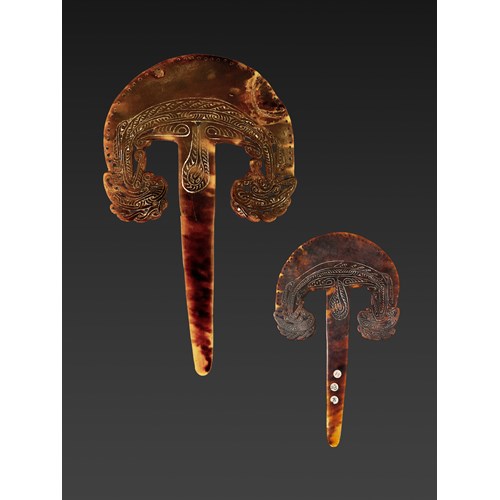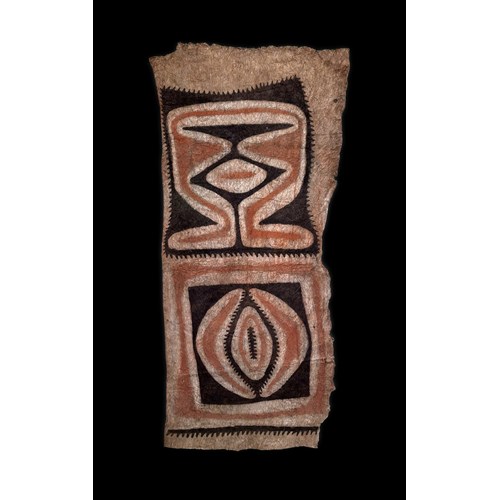Gov. Hahl North Coast Headrest
Period 19th/20th century
Origin North Coast area (Murik Lakes & Schouten Islands included), Lower Sepik, PNG, Melanesia.
Medium Hard wood with traces of pigment, ratan, cane and red colonial trade-cloth with a fine patina of age and usage
Dimension 50 x 13 cm (19⁵/₈ x 5¹/₈ inches)
Period: 19th/20th century
Origin: North Coast area (Murik Lakes & Schouten Islands included), Lower Sepik, PNG, Melanesia.
Medium: Hard wood with traces of pigment, ratan, cane and red colonial trade-cloth with a fine patina of age and usage
Dimension: 50 x 13 cm (19⁵/₈ x 5¹/₈ inches)
Provenance: Collected in the field by Dr. Albert Hahl (1868/1945), Minister of Justice in colonial German New Guinea from 1896 to 1902 then Governor of German New Guinea (1902/1914); Ex collection Albert Hahl ; by descent to his granddaughter ; acquired from the family.
After studying law and economics, Albert Hahl (1868-1945) worked for a time in the Bavarian Ministry of the Interior before entering the imperial colonial service in 1895. He began his career as a judge in Herbertshöhe (now Kokopo) in New Britain (Bismarck Archipelago, German New Guinea). He subsequently occupied several posts in German colonial Oceania (Melanesia and Micronesia) before being appointed governor of German New Guinea in 1902. In this position, he administered all German colonial properties in the South Pacific with the exception of Samoa. Hahl actively participated in the exploration of the territory and he was the first to visit the island of Bougainville (Northern Solomon Islands).
Hahl was also very interested in ethnology as a discipline and interested in current research and methodological developments. All while contributing to the installation of colonial power, he worked to learn myths, languages, and the arts so as to preserve a trace of a way of life that he knew was doomed to disappear. But beyond his personal interest, he used the discipline of anthropology to carry out his colonial policy, having knowledge and information on the ways and customs of the populations enabled him to better administer them.
Hahl is also in contact with several German museum officials to whom he sent a number of objects collected in the field by himself and his colonial administrators. Many of these objects collected, mainly from German New Guinea, the Bismarck Archipelago and the Solomon Islands, are now in private and public collections.
Moreover, it is under his mandate that the use of traditional currencies was forbidden in favor of the German mark and that new taxes ("head-tax") were put in place. These measures contributed to the offering of many objects by the Papuans for sale so that the local people could pay taxes and access consumer goods imported from Europe.
Hahl served as governor of German New Guinea until 1914. When the First World War broke out, he was in Germany for official business. From 1914 to 1918 he held an officer's post in the Bavarian army and in 1918 he was finally appointed director of the Neu Guinea Compagnie, a purely formal position however, as the German Empire had fallen at the end of the First World War.
Governor Albert Hahl passed away on 25 December 1945.
More artworks from the Gallery









